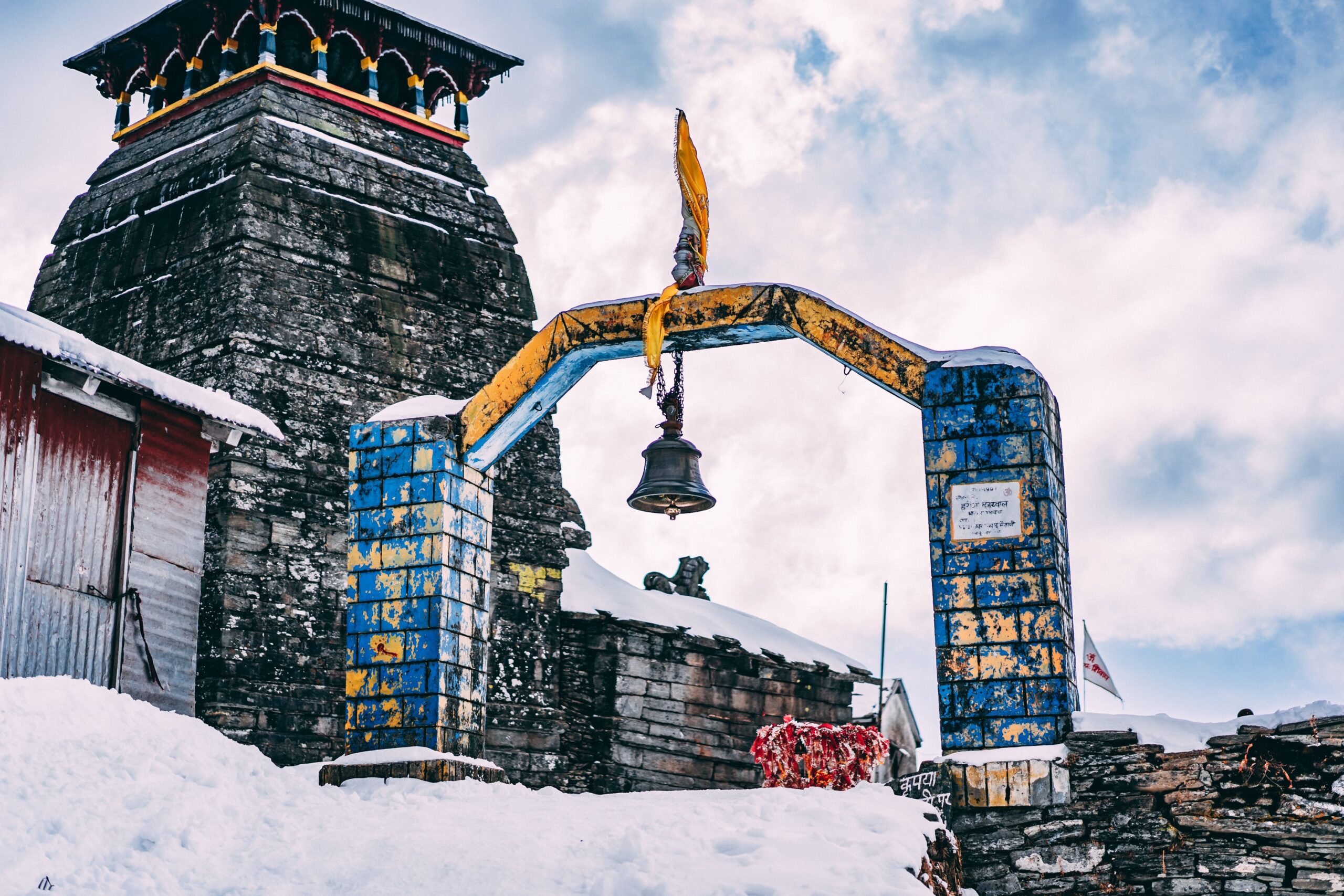May 20th 2023
In a concerning development, the iconic Tungnath Temple, nestled amidst the stunning Himalayan ranges in India, has been observed tilting, raising alarm among devotees and heritage conservationists. This ancient temple, dedicated to Lord Shiva, is not only a significant spiritual site but also an architectural marvel, drawing tourists from around the world.
Reports suggest that the tilt of the Tungnath Temple was first noticed by locals and temple priests who detected a noticeable shift in the structure’s alignment. Concerned about the potential consequences, authorities promptly initiated measures to assess the situation and address the issue to prevent any further damage to the temple.
Experts from the Archaeological Survey of India (ASI) and structural engineers were summoned to inspect the temple and evaluate the extent of the tilting. Preliminary investigations indicate that the shift might be a result of natural causes, including soil erosion and the geological activity in the region. The temple, which is located at an altitude of 3,680 meters (12,073 feet), faces challenges due to its high-altitude location and exposure to extreme weather conditions.
To mitigate the risk and safeguard this revered religious and cultural heritage site, a comprehensive plan is being devised. The authorities have initiated discussions with conservation experts, architects, and engineers to develop strategies for stabilizing and preserving the Tungnath Temple. The primary focus is to find ways to rectify the tilt and reinforce the temple’s foundation, ensuring its long-term structural stability.
The preservation efforts are expected to involve a combination of measures, including geological surveys, soil stabilization techniques, and structural reinforcements. The ASI, along with local authorities and religious organizations, is working together to pool resources and expertise to address the situation promptly.
Must Read: 12 Jyotirlingas in India: Must-Visit Pilgrimage Sites 2023
While ensuring the structural integrity of the temple is of paramount importance, steps are also being taken to minimize disruption to the daily prayers and rituals performed by devotees. Alternate arrangements have been made to conduct religious ceremonies and offer prayers in close proximity to the temple premises during the restoration period.
The Tungnath Temple, believed to have been built over a thousand years ago, attracts a significant number of pilgrims and tourists due to its religious and historical significance. It is one of the Panch Kedar temples and holds immense importance in Hindu mythology and spirituality.
The authorities and the local community are actively engaged in raising awareness about the temple’s condition and garnering support for its preservation. Efforts are underway to secure funding for the restoration project through public and private partnerships, with the aim of restoring the temple to its former glory and ensuring its continued existence as a symbol of faith and cultural heritage.
As the preservation plans progress, visitors are being requested to cooperate with any necessary restrictions or safety measures put in place. The authorities are committed to providing regular updates on the progress of the restoration work and ensuring the safety of all involved.
The tilting of the Tungnath Temple serves as a reminder of the delicate balance between preserving ancient cultural treasures and protecting them from the challenges posed by nature. With collective efforts and expertise, it is hoped that this architectural gem can be safeguarded for future generations to appreciate and cherish.
All your need to know about Tungnath Temple
Tungnath Temple is a renowned Hindu shrine dedicated to Lord Shiva, located in the state of Uttarakhand, India. It holds great significance as it is considered the highest Shiva temple in the world, situated at an elevation of approximately 3,680 meters (12,073 feet) above sea level in the scenic Garhwal Himalayan range.
The temple is a part of the Panch Kedar pilgrimage, which includes five holy shrines dedicated to Lord Shiva. It is believed to be over a thousand years old and holds a significant place in Hindu mythology and religious traditions.
The architecture of Tungnath Temple reflects the distinctive style of the region, with a stone structure comprising a sanctum sanctorum (garbha griha) and a mandapa (assembly hall). The temple is constructed using local stones and wood, which blend harmoniously with the natural surroundings.
One of the main attractions of the temple is its breathtaking panoramic views of the surrounding mountains, including the majestic peaks of Nanda Devi, Kedarnath, and Chaukhamba. The area around the temple is known for its serene and tranquil atmosphere, attracting devotees, pilgrims, and nature enthusiasts alike.
The Chopta-Tungnath-Chandrashila Trek via Deoria Tal: Stories of Rudraprayag by Ipsita Paul
To reach the Tungnath Temple, visitors must embark on a trek from the town of Chopta, which serves as the base camp. The trek is moderately challenging and offers scenic beauty along the way, passing through lush meadows, dense forests, and picturesque landscapes.
Apart from its religious significance, Tungnath Temple also appeals to adventure enthusiasts who engage in activities like camping, trekking, and exploring nearby attractions such as Chandrashila Peak, which offers panoramic views of the Himalayas.
7 Reasons Why Chopta Valley Is A Popular Place by Riccha Arora
Tungnath Temple stands as a testament to the rich cultural and spiritual heritage of India and continues to attract devotees and tourists from around the world, seeking spiritual solace, natural beauty, and a sense of awe-inspiring tranquility amidst the towering Himalayas.
Must Read: The Case of the Namesakes: Two Important Indian Himalayan Cities
Featured Image Source: Ashwini Chaudhary(Monty)
